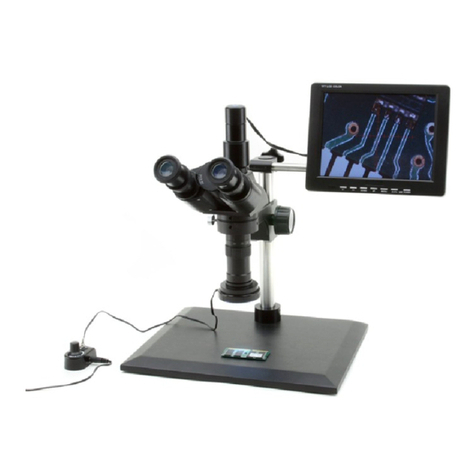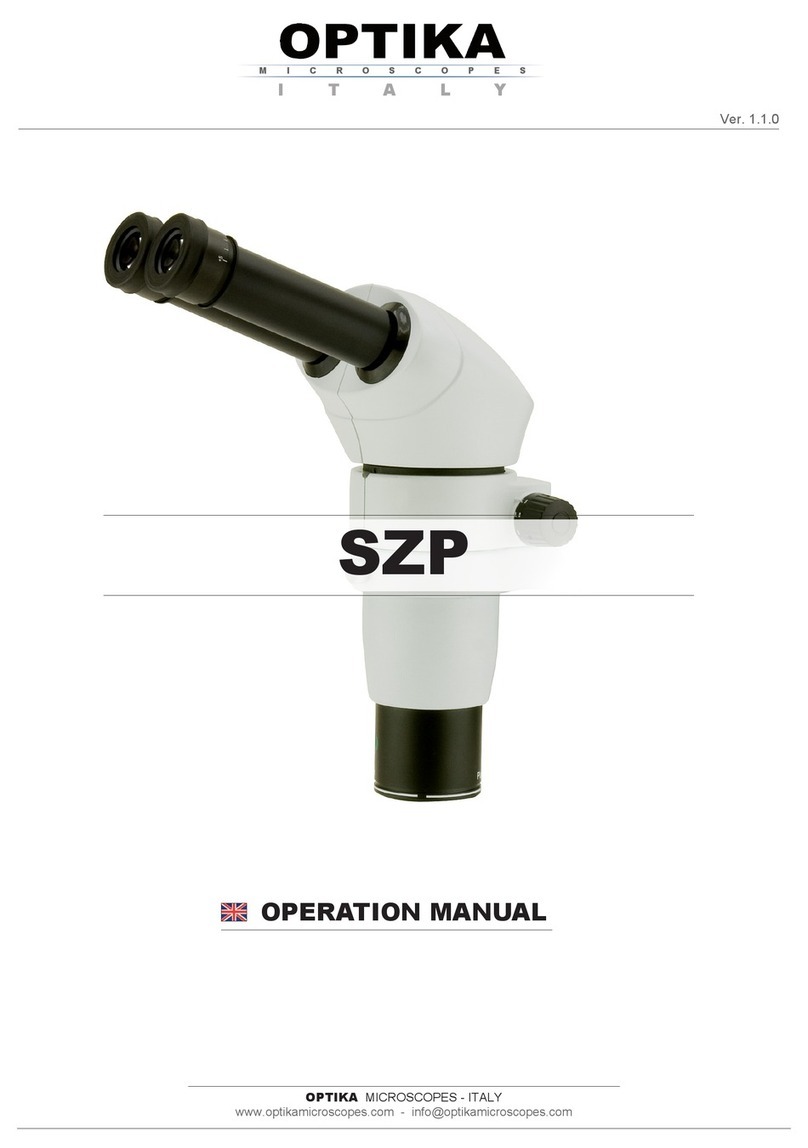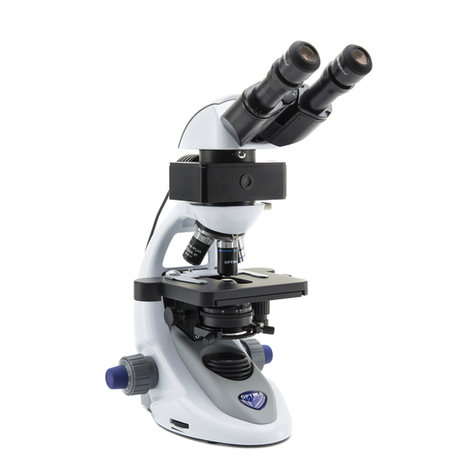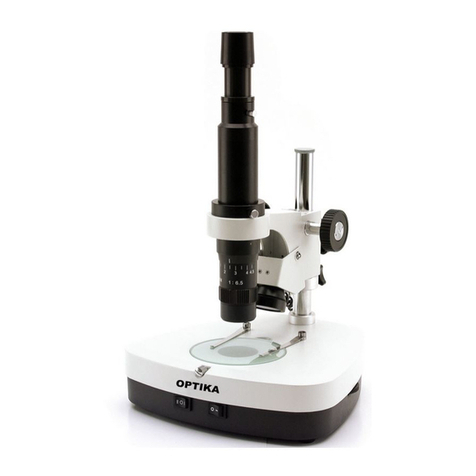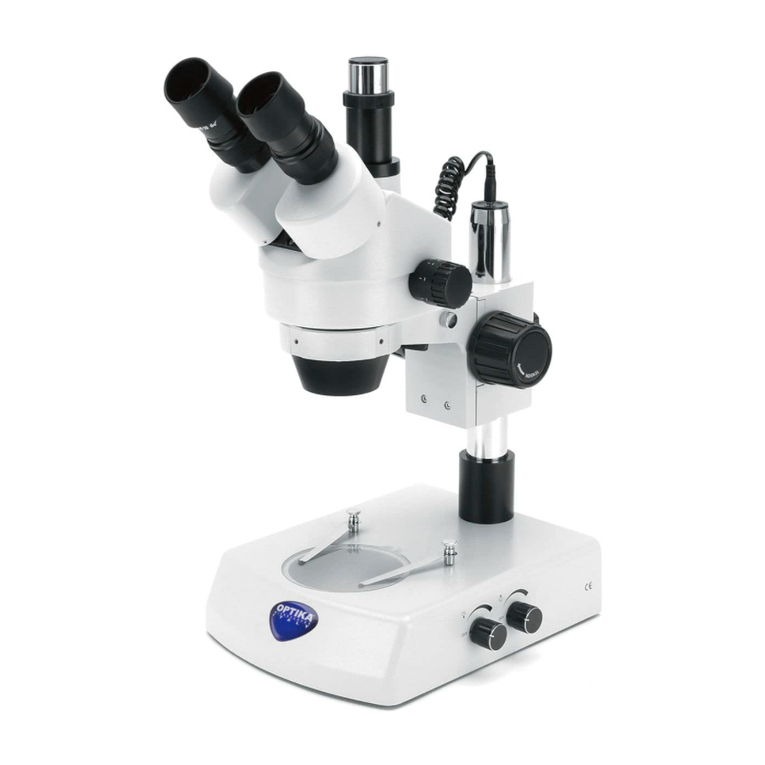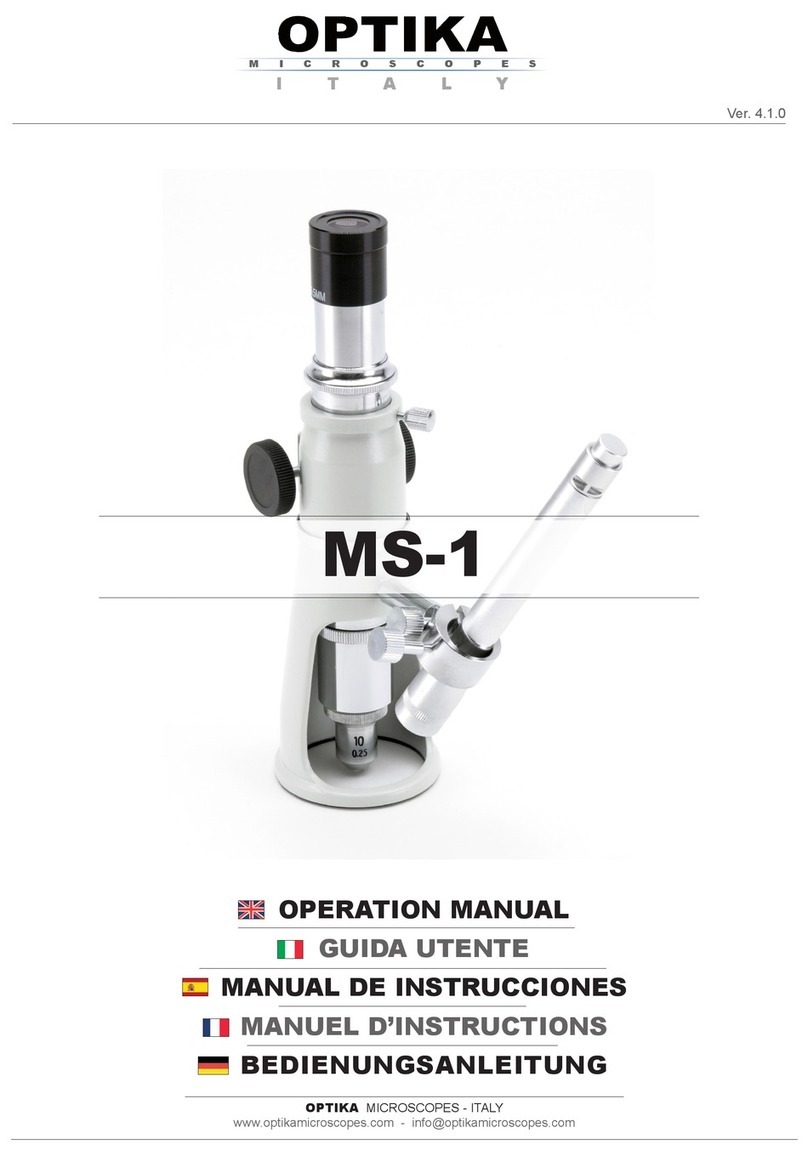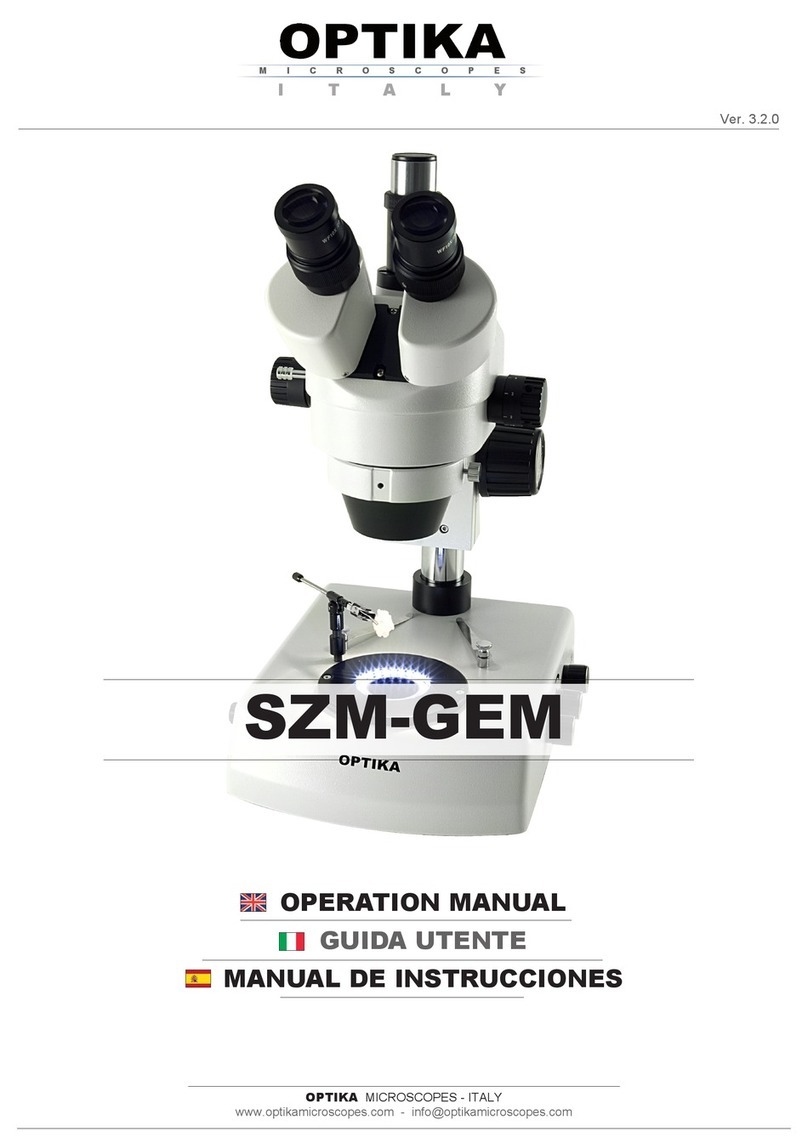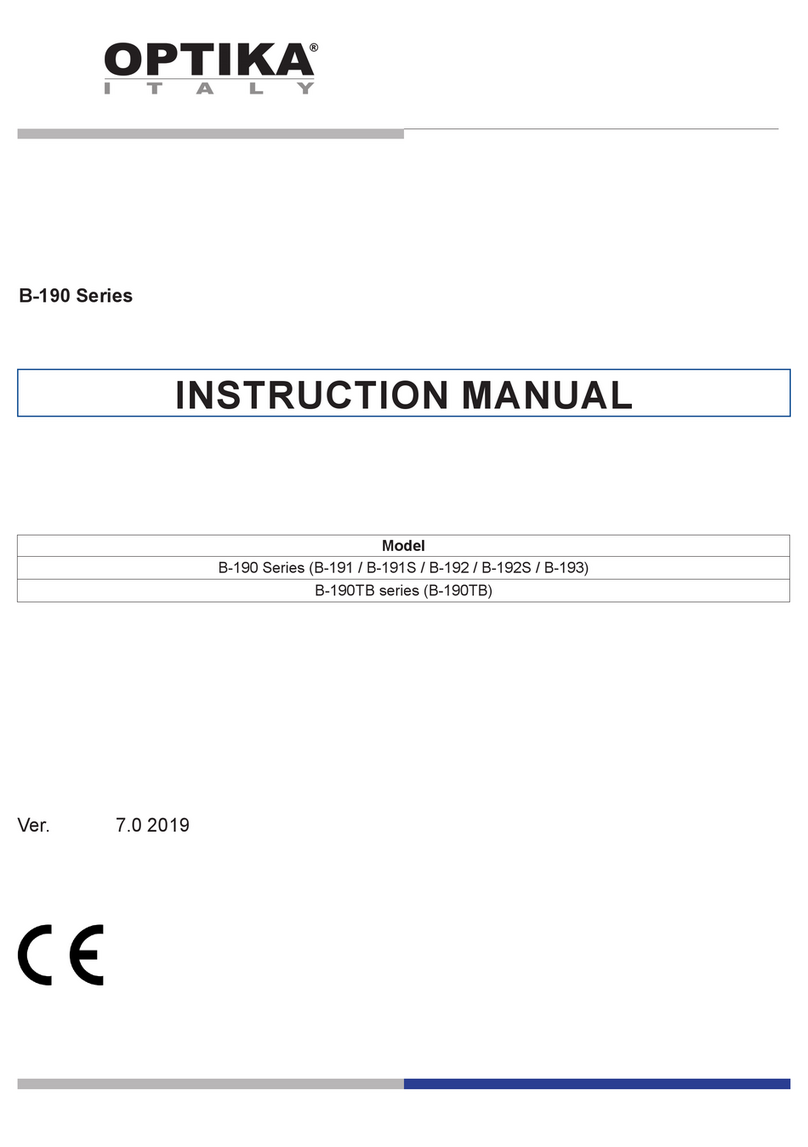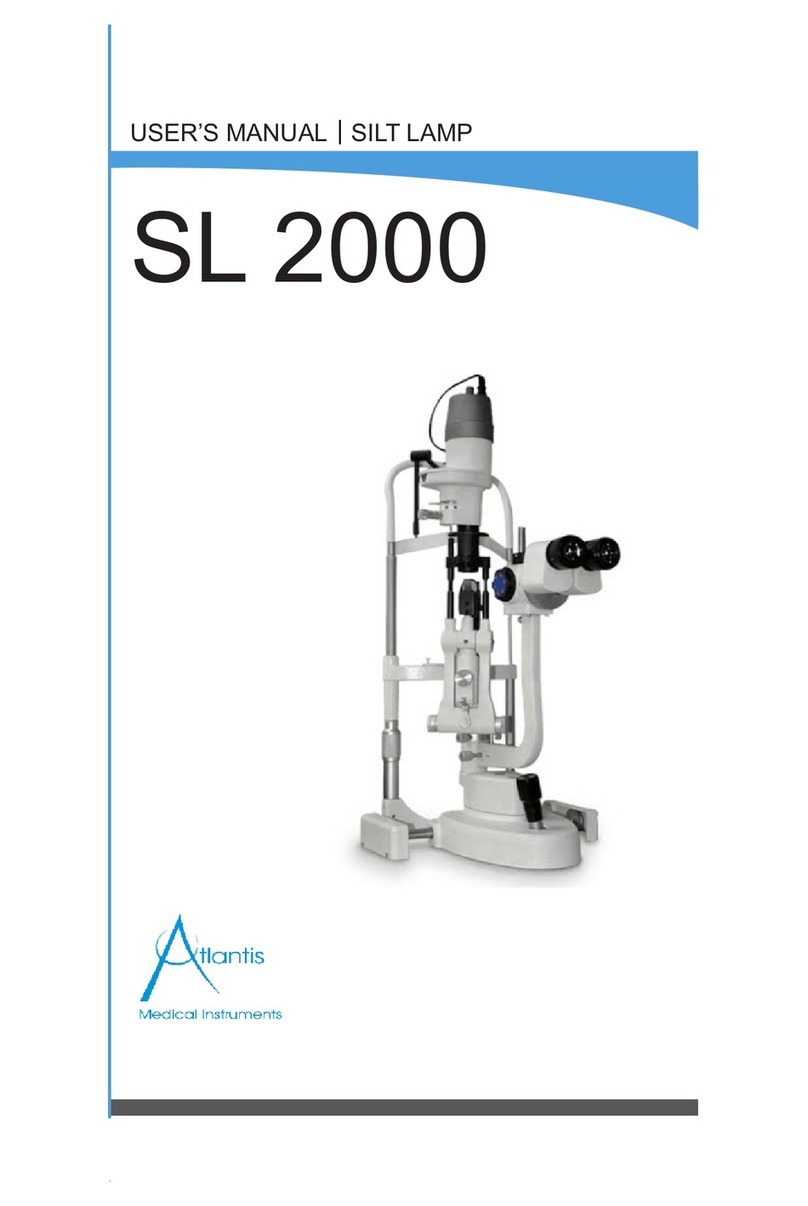
Page6
3.0 PRINCIPLES OF DARKFIELD ILLUMINATION
Darkeldmicroscopyisaspecializedilluminationtechniquethatcapitalizesonobliqueillumination
toenhancecontrastinspecimensthatarenotimagedwellundernormalbrighteldilluminationcon-
ditions.
Allofusarequitefamiliarwiththeappearanceandvisibilityofstarsonadarknight,thisdespitetheir
enormousdistancesfromtheearth.Starscanbeseenbecauseofthestarkcontrastbetweentheir
faintlightandtheblacksky.
This principle is applied in darkeld (also called darkground) microscopy, a simple and popular
methodformakingunstainedobjectsclearlyvisible.Suchobjectsareoftenhaverefractiveindices
verycloseinvaluetothatoftheirsurroundingsandaredifculttoimageinconventionalbrighteld
microscopy.Forinstance,manysmallaquaticorganismshavearefractiveindexrangingfrom1.2
to1.4,resultinginanegligibleopticaldifferencefromthesurroundingaqueousmedium.Theseare
idealcandidatesfordarkeldillumination.
Darkeldilluminationrequiresblockingoutofthecentrallightwhichordinarilypassesthroughand
around(surrounding)thespecimen,allowingonlyobliqueraysfromeveryazimuthto“strike”the
specimenmountedonthemicroscopeslide.ThetoplensofasimpleAbbedarkeldcondenseris
sphericallyconcave,allowinglightraysemergingfromthesurfaceinallazimuthstoformaninverted
hollowconeoflightwithanapexcenteredinthespecimenplane.Ifnospecimenispresentandthe
numericalapertureofthecondenserisgreaterthanthatoftheobjective,theobliquerayscrossand
allsuchrayswillmissenteringtheobjectivebecauseoftheirobliquity.Theeldofviewwillappear
dark.
Thedarkeldcondenser/objective pairillustrated in Figure3is ahigh-numericalaperture arran-
gementthatrepresentsdarkeldmicroscopyinitsmostsophisticatedconguration,whichwillbe
discussedindetailbelow.Theobjectivecontainsaninternalirisdiaphragmthatservestoreducethe
numericalapertureoftheobjectivetoavaluebelowthatoftheinvertedhollowlightconeemittedby
thecondenser.Thecardioidcondenserisareectingdarkelddesignthatreliesoninternalmirrors
toprojectanaberration-freeconeoflightontothespecimenplane.
Whenaspecimenisplacedontheslide,especiallyanunstained,non-lightabsorbingspecimen,the
obliquerayscrossthespecimenandarediffracted,reected,and/orrefractedbyopticaldiscontinui-
ties(suchasthecellmembrane,nucleus,andinternalorganelles)allowingthesefaintraystoenter
theobjective.Thespecimencanthenbeseenbrightonanotherwiseblackbackground.Intermsof
Fourieroptics,darkeldilluminationremovesthezerothorder(unscatteredlight)fromthediffraction
patternformedattherearfocalplaneoftheobjective.Thisresultsinanimageformedexclusively
fromhigherorderdiffractionintensitiesscatteredbythespecimen.
